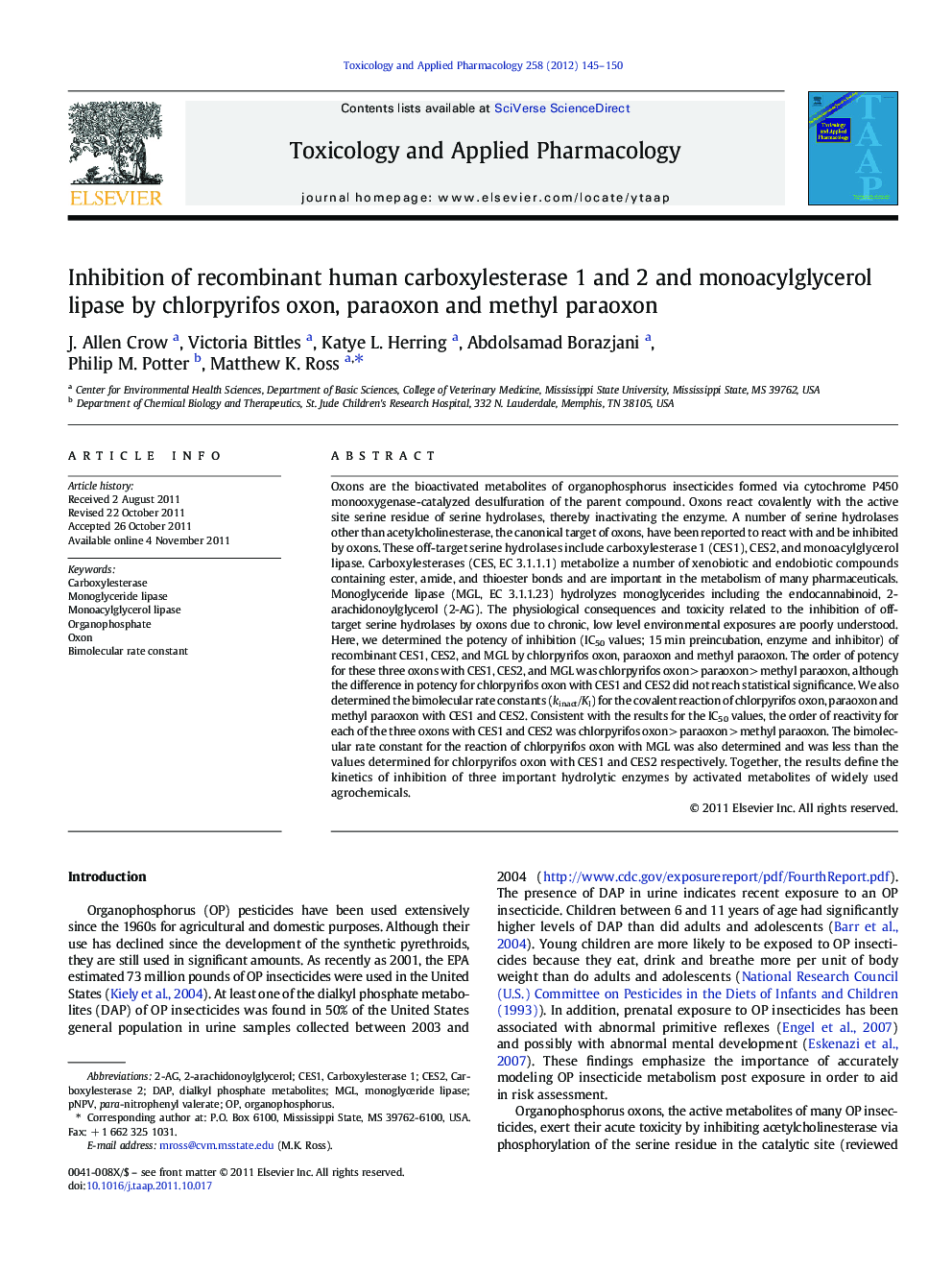| Article ID | Journal | Published Year | Pages | File Type |
|---|---|---|---|---|
| 2569416 | Toxicology and Applied Pharmacology | 2012 | 6 Pages |
Oxons are the bioactivated metabolites of organophosphorus insecticides formed via cytochrome P450 monooxygenase-catalyzed desulfuration of the parent compound. Oxons react covalently with the active site serine residue of serine hydrolases, thereby inactivating the enzyme. A number of serine hydrolases other than acetylcholinesterase, the canonical target of oxons, have been reported to react with and be inhibited by oxons. These off-target serine hydrolases include carboxylesterase 1 (CES1), CES2, and monoacylglycerol lipase. Carboxylesterases (CES, EC 3.1.1.1) metabolize a number of xenobiotic and endobiotic compounds containing ester, amide, and thioester bonds and are important in the metabolism of many pharmaceuticals. Monoglyceride lipase (MGL, EC 3.1.1.23) hydrolyzes monoglycerides including the endocannabinoid, 2-arachidonoylglycerol (2-AG). The physiological consequences and toxicity related to the inhibition of off-target serine hydrolases by oxons due to chronic, low level environmental exposures are poorly understood. Here, we determined the potency of inhibition (IC50 values; 15 min preincubation, enzyme and inhibitor) of recombinant CES1, CES2, and MGL by chlorpyrifos oxon, paraoxon and methyl paraoxon. The order of potency for these three oxons with CES1, CES2, and MGL was chlorpyrifos oxon > paraoxon > methyl paraoxon, although the difference in potency for chlorpyrifos oxon with CES1 and CES2 did not reach statistical significance. We also determined the bimolecular rate constants (kinact/KI) for the covalent reaction of chlorpyrifos oxon, paraoxon and methyl paraoxon with CES1 and CES2. Consistent with the results for the IC50 values, the order of reactivity for each of the three oxons with CES1 and CES2 was chlorpyrifos oxon > paraoxon > methyl paraoxon. The bimolecular rate constant for the reaction of chlorpyrifos oxon with MGL was also determined and was less than the values determined for chlorpyrifos oxon with CES1 and CES2 respectively. Together, the results define the kinetics of inhibition of three important hydrolytic enzymes by activated metabolites of widely used agrochemicals.
► IC50 values and bimolecular rate constants (kinact/KI) of human recombinant CES1, CES2, and MGL proteins and chlorpyrifos oxon, paraoxon and methyl paraoxon were determined. ► The IC50 values for the oxons with CES1, CES2, and MGL followed the rank order: chlorpyrifos oxon > paraoxon > methyl paraoxon. ► The order of reactivity for the oxons with CES1 and CES2 was chlorpyrifos oxon > paraoxon > methyl paraoxon. ► Chlorpyrifos oxon was less reactive with MGL than with either CES1 or CES2.
